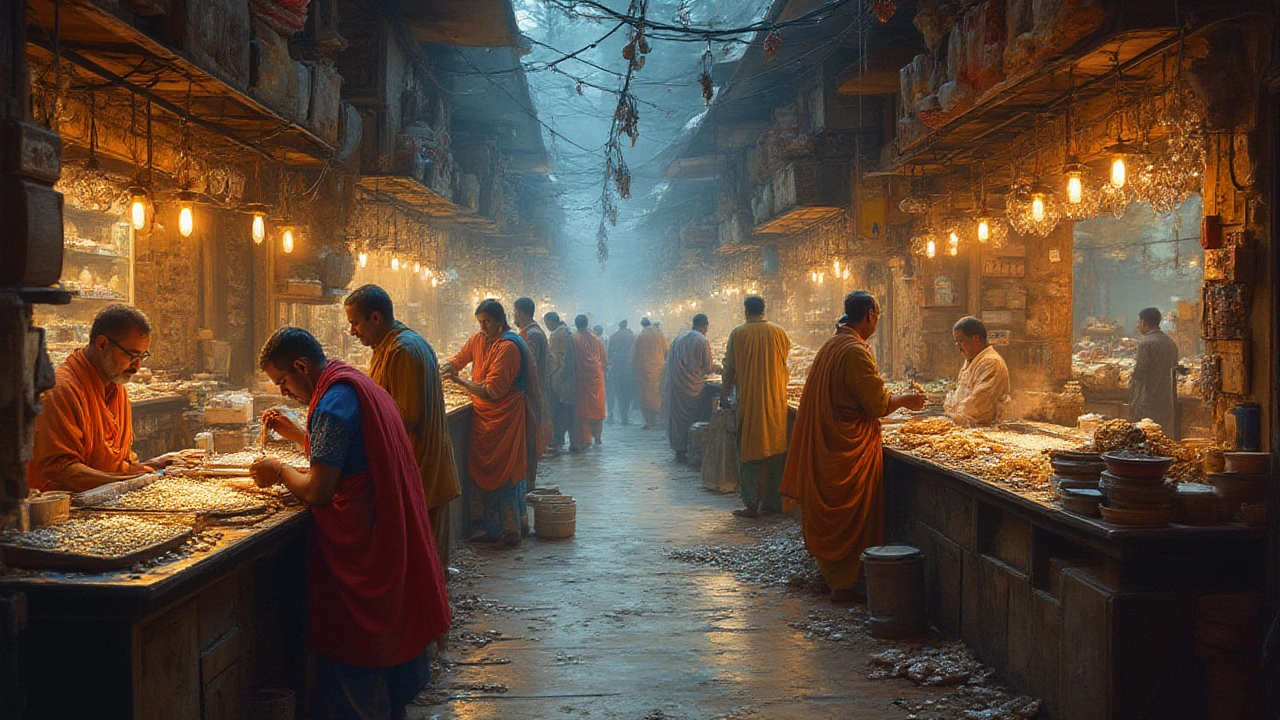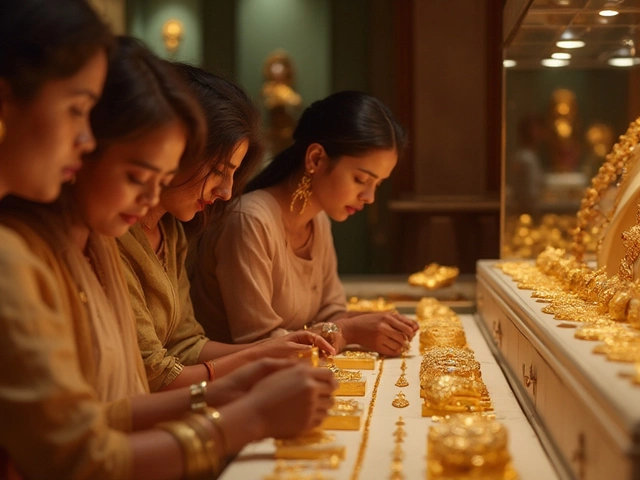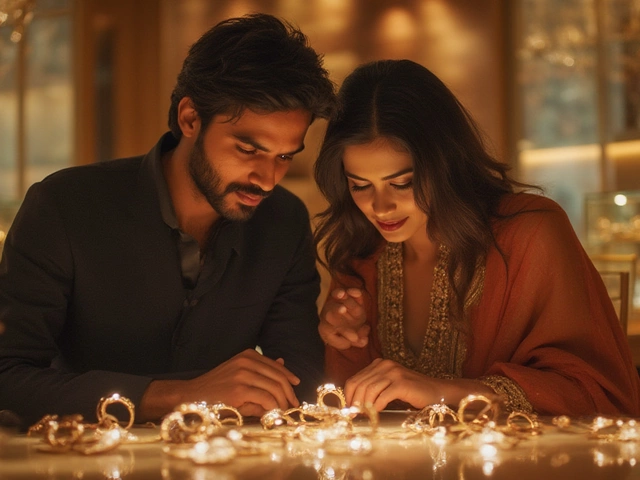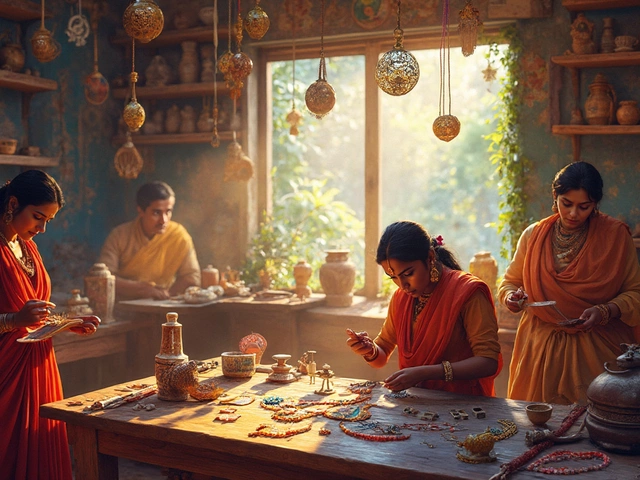
Walk through an Indian jewelry bazaar and you’ll see a sight that’ll leave you scratching your head. Sparkling diamonds, stacks of them, look just as bright as what you’d spot in a glitzy New York store, yet their prices seem surprisingly low. You might even wonder if there's a catch. In reality, though, India has become a global force in diamond trading—and that’s got a lot to do with why diamonds are cheap in India. Let’s unravel this curious story and find out what’s really driving these low prices, how the system works, and what you need to know as a potential buyer or just a diamond lover.
The Engines Behind India’s Diamond Market
India isn’t just a place where you can buy diamonds for less. It’s the backbone of the world’s diamond polishing and trading business. Somewhere between 90% and 95% of all diamonds in the world are cut or polished in India, mainly in the city of Surat. It’s not a small cottage industry. We’re talking about over 700,000 skilled workers and a supply chain that’s so efficient, traders from Antwerp to Tel Aviv rely on it.
But why here? First: labor costs. Polishing a diamond is seriously precise work, and India’s workforce is both skilled and significantly cheaper than those in Western countries. This means less overhead for the diamond companies, and lower costs all the way down—right to the shops where locals and tourists buy jewelry.
Here’s another thing: no import duty is levied on rough diamonds entering India for processing. Instead, the government slaps a small tax—just 1.5%—on cut and polished diamond exports. The low duties mean diamonds come in and out with barely a bump to their price tags.
Want hard data? Take a look at this table comparing key countries involved in the diamond supply chain:
| Country | Role in Diamond Market | Avg. Labor Cost per Carat (USD) | Import Duties (Rough Diamonds) |
|---|---|---|---|
| India | Polishing & Trading | 6-8 | 0% |
| Belgium | Trading | 35-50 | 2% |
| Israel | Trading | 28-45 | 3% |
Compare that $6-8 per carat in India to over $35 in Belgium. Prices, as you can imagine, tumble down.
There’s more: India’s gold jewelry tradition has always been focused on value and investment. So, Indian consumers expect the best deals and bargain hard, particularly when buying for weddings, which are a massive deal in this country—an estimated 10 million weddings a year.
Combine all this, and you have an industry built for efficiency, scale, and low pricing. That’s why, if you’re buying diamonds in India, you’re not dealing with the same markups you see in most Western storefronts.
Cutting Costs—Literally: How Diamonds Get Their Price Tag
Here’s where it gets interesting. The main reason diamonds are cheap in India comes from how they’re processed. India’s diamond polishing centers handle millions of carats, but not all diamonds are top grade. In fact, most rough diamonds processed here are small to mid-size stones—the ones often used in cluster jewelry, nose pins, and everyday wear rather than massive solo engagement rings.
Why does this matter? These stones have two things in common: their price per carat is lower to begin with, and they’re produced at breakneck volume. Combine it with ultra-efficient cutting factories—you’ll see why costs get a serious shave. Unlike the West, where smaller diamonds are sometimes sent to cheaper labor markets for cutting, most Indian diamonds are cut locally, which adds further to savings.
The diamond grading standards used in India can also be a bit more flexible. You may come across diamonds here labeled as VS (very slightly included) or SI (slightly included), but sometimes Western grading labs would rate the same stone a notch lower. This is not a scam, just a difference in grading approaches between local and international labs. It means you need to look closely at certifications if you want top-quality stones.
Now, many Indian diamond retailers will sell unset stones alongside finished jewelry. If you’re a savvy buyer, you can buy a loose diamond and then choose your own setting, skipping unnecessary markups entirely.
So, if you walk into a jewelry store in Mumbai, you’ll see bracelets and rings sparkling with tiny diamonds—but you’ll pay much less than you would for a similar piece in London or Tokyo. This isn’t just due to currency conversion. It’s baked into how these stones are sourced, processed, and sold. But let’s not ignore one big caveat: diamond prices in India can sometimes reflect lower quality compared to those marketed heavily in Western stores. If you know what you’re looking for, though, you can definitely find show-stopping pieces at a fraction of Western prices.

Cultural Buying Habits and Festive Fervor
Indians have a deep connection with gold and precious stones that goes back centuries, but diamonds have become the centerpiece in modern celebrations. Walk through the markets in October during Diwali, or right before the wedding season, and you’ll see diamonds selling like samosas at a train station. This wild demand does two things: it creates incredible competition among jewelers, and it means retailers are forced to keep their pricing as attractive as possible to stay in the game.
The tradition of buying diamond jewelry for weddings, anniversaries, and other milestones means there’s never a shortage of buyers. Retailers will often introduce special timing sales, festival offers, and bundled discounts. If you visit a store around Akshaya Tritiya (a popular Hindu festival for buying gold and jewelry), the deals can be jaw-dropping. Some stores will even throw in free making charges (labor fees for the setting) or toss in additional discounts for larger purchases.
Local customers are seasoned negotiators. Bargaining isn’t seen as rude, it’s just part of the process. Shops often expect you to haggle, so marked prices aren’t always what you’ll pay. For tourists, knowing this can make a big difference.
- Time your purchase around big festivals or end-of-season sales for the best deals.
- Always ask about discounts on making charges—these can sometimes be waived.
- Don’t settle for the first price; negotiate, especially in non-chain local stores.
But here’s the kicker: Indian consumers are more likely to focus on the perceived value of jewelry as an investment. This pushes sellers to offer stones with good resale value and transparent pricing—unlike some international markets, where the focus is on branding or packaging. So if you’re pragmatic, you’ll instantly find buying options that are less about hype and more about what you actually get for your rupee.
Savvy Diamond Shopping in India—What to Watch Out For
Cheap doesn’t always mean better. India does offer diamonds at prices you’ll rarely find elsewhere, but that doesn’t make every diamond a steal. Here are a few things you absolutely must keep your eyes on:
- diamond prices in India are lowest at source but there’s still a range of quality and value across the market.
- Certification matters. If you’re buying anything over half a carat, insist on certification from an internationally recognized gem lab (like GIA or IGI). Indian labs are decent, but not every store uses them. Check out the paperwork before putting down your cash.
- Understand grading terms. Local vendors might describe a stone as "VS" or "SI," but take a good look or ask for a second opinion—sometimes the inclusions can be more visible than you’d expect if you’re used to Western stones.
- Be wary of “fancy” colored stones being passed off as rare. India produces a lot of brown-tinted or slightly off-white diamonds, which cost much less than clean, colorless stones. There’s nothing wrong with them, but you should know exactly what you’re buying.
- Don’t overlook the extras: making charges, GST (currently 3% on jewelry), and possible fees for setting or resizing.
If you want to play it super safe, shop at larger, well-known jewelry chains—they often have transparent pricing and easy returns. But the real deals are sometimes found in smaller neighborhood shops, as long as you come prepared with some diamond knowledge.
The bottom line? India’s diamond scene is a unique mix of global trading routes, efficient local labor, and a culture obsessed with value. That’s why you’ll find the best diamond prices in India—and if you do your homework, you might just leave with the deal of a lifetime.


